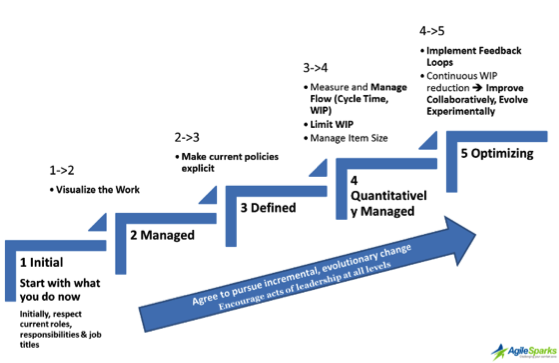
If you’re a fan of Jim Benson and Tonianne DeMaria Barry’s Personal Kanban writings, you’ll know that they have two basic rules:
- Visualize your work
- Limit your Work-in-Progress
Being relatively new to Kanban, the first rule instantly made a lot of sense to me — particularly in the context of using Planview AgilePlace. Being able to see the steps our team follows to get work done on a board and then visually track our progress has performed wonders for transparency, focus and collaboration.
As for limiting WIP, the light bulb moment was a lot later in coming. In terms of the Kanban maturity model, our team is probably somewhere between two and three.

We’ve mapped out our workflow on a Kanban board — and continuously revise it to improve our process. We also have explicit policies around how we get that work done.
When it comes to setting WIP limits, we made a half-hearted attempt to limit ourselves to three cards each, but agreed we’d come back to that later as it’s really for more advanced Kanban teams. Right?
The importance — and urgency — of setting WIP limits all changed for me after a recent conversation with Jim and Tonianne. Jim pointed out, “If you’re not limiting your WIP, then there is no flow. Your Kanban board is no more than a to-do list.” That was the “aha” moment I’ve been needing. If we don’t limit our work, how can we see where the bottlenecks are? And if we don’t identify the bottlenecks in our process, how can we fix them?
If we’re really committed to improving our workflow, then it’s time to step up. Setting WIP limits shouldn’t be an after-thought that sounds good in theory; on the contrary, it’s a necessity to avoid the penalties of wasted time, effort and resources.
Need more convincing? Read Jim and Tonianne’s “Why Limit WIP” blog series. At some level we’re all guilty of taking on more work than we can handle, starting new tasks before we finish existing ones, and then forgetting to complete some of them or compromising the quality of our work as we get overwhelmed by it all.
Jim and Tonianne’s parting words were that setting WIP limits is difficult; and in the beginning, it can feel counter-intuitive. But as soon as you discover that prioritizing some tasks over others ultimately results in completing all of the tasks sooner than if you’d started them all at the same time, you’ll wonder why it took you so long to try it.
![A Global Collaborative Work Management Blueprint [Video]](https://blog.planview.com/wp-content/uploads/2019/07/A-Global-Collaborative-Work-management-blueprint.png)



